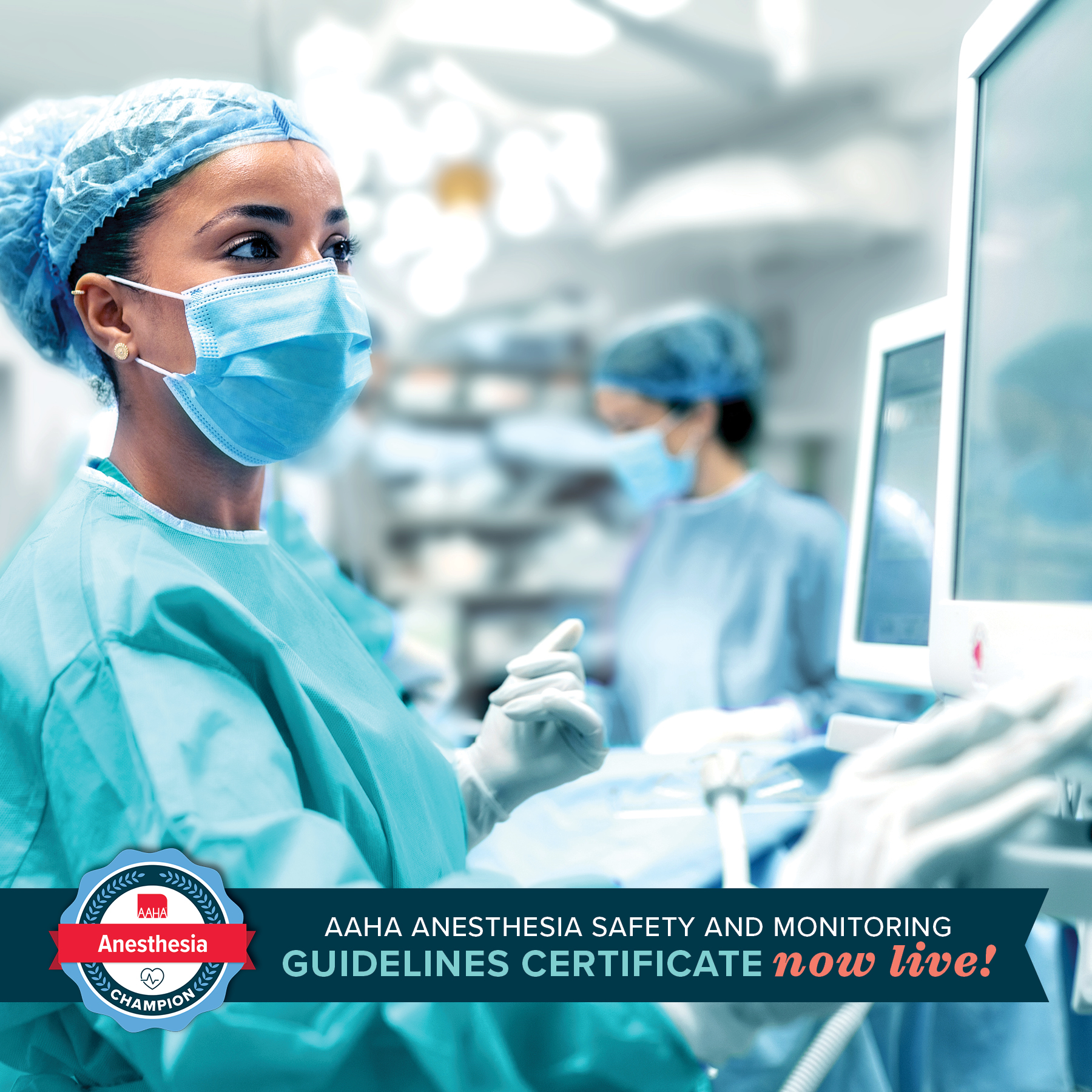General anesthesia
For outpatient dental anesthesia, it is useful to select perioperative medications that:
- Typically provide for a rapid and complete recovery (propofol or alfaxalone)
- Can be carefully reversed (diazepam, midazolam, opioids, and dexmedetomidine)
- Can be totally eliminated by supported ventilation (isoflurane, sevoflurane, or desflurane), or
- Do not have substantial intrinsic toxicity or significant adverse effects should drug effects persist (diazepam, midazolam, or butorphanol)
In situations in which delayed or inadequate recovery is recognized, physiologic support including judicious fluid therapy, support of body temperature, ventilatory support, and extended postanesthetic care should be provided. It is worth noting that there is a strong consensus among veterinary anesthesiologists to reverse dexmedetomidine only when medically necessary, which allows the beneficial residual sedation to continue after the completion of procedures in order to facilitate and ease recovery. If necessary, consider using a low dose of atipamezole in cats.62
Adequate fluid replacement should be given to help prevent a renal crisis and to help maintain a proper perioperative hemodynamic state. The rate of IV fluid administration will depend on the particular patient’s needs, but will generally be in the range of 3–5 mL/kg/hr.63
Careful planning and additional attention to drug and dosage selection is important to safely manage high-risk patients. Some injectable general anesthetic agents need to be used with care in higher-risk patients (including geriatric animals) because of the typically altered hemodynamics, pharmacokinetics, and pharmacodynamics; decreased plasma protein binding; and decreased ability for hepatic metabolism and renal excretion in compromised animals. Brachycephalic breeds and their associated airway conformations warrant particularly close attention during the induction and recovery periods to avoid hypoxia and prevent dyspnea.
Inhalant general anesthetics are the anesthetics of choice in many small animal patients, especially for procedures lasting longer than 10–15 min. The inhalants isoflurane and sevoflurane offer the advantage for outpatient anesthesia of rapid adjustment of inhaled and alveolar anesthetic dose and effect. However, inhalational induction of anesthesia (by either mask or chamber) is contraindicated in almost all clinical situations.64
Dose-dependent vasodilatation and hypotension preclude the use of higher doses of inhalant anesthetics in many higher-risk patients. Dose-sparing anesthesia achieved using lower doses of synergistically acting injectable systemic agents (e.g., a fentanyl infusion) with local anesthetic techniques allows for the maintenance of partial IV anesthesia (PIVA) with comparatively low doses of inhalants. In other words, “less is more.” In more extreme cases, injectable agents (total IV anesthesia [TIVA]) are best used in conjunction with intubation and oxygen supplementation but without inhalant anesthesia. This approach can often support markedly improved hemodynamics.
Patients should be preoxygenated for 2–5 min before anesthetic induction to help prevent hypoxia from developing during induction. Every anesthetized patient should be intubated to protect and maintain a patent airway. The safety that often has been associated with inhalants, as opposed to injectable anesthetics, is partly due to the customary, if not obligatory, provision of supplemental oxygen as the carrier gas for the volatile anesthetics. Endotracheal intubation and administration of supplementary oxygen can easily be incorporated into injectable general anesthetic techniques and substantially adds to patient safety. If anesthesia is deep enough to allow for placement of an endotracheal tube, then the patient is no longer able to protect its airway from either obstruction or aspiration of regurgitated or foreign material. Adherence to proper techniques protects our personnel and practices from waste anesthetic gases.64
Click here for more information on anesthesia safety or visit the Resource center.







